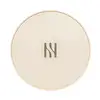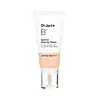What's inside
What's inside
 Key Ingredients
Key Ingredients

 Benefits
Benefits

 Concerns
Concerns

 Ingredients Side-by-side
Ingredients Side-by-side

Water
Skin ConditioningMethyl Trimethicone
Skin ConditioningCI 77891
Cosmetic ColorantHomosalate
Skin ConditioningPolyglyceryl-3 Polydimethylsiloxyethyl Dimethicone
Skin ConditioningButylene Glycol Dicaprylate/Dicaprate
EmollientEthylhexyl Salicylate
UV AbsorberDiphenylsiloxy Phenyl Trimethicone
Skin ConditioningTitanium Dioxide
Cosmetic ColorantPropanediol
SolventGlycerin
HumectantAcrylates/Stearyl Acrylate/Dimethicone Methacrylate Copolymer
CI 77947
Caprylyl Methicone
Skin ConditioningDisteardimonium Hectorite
StabilisingTrisiloxane
Skin ConditioningButylene Glycol
HumectantVp/Hexadecene Copolymer
1,2-Hexanediol
Skin ConditioningSodium Chloride
MaskingCI 77492
Cosmetic ColorantAluminum Hydroxide
EmollientSorbitan Sesquioleate
EmulsifyingDimethicone Crosspolymer
Emulsion StabilisingSodium Stearoyl Glutamate
CleansingStearic Acid
CleansingCaprylyl Glycol
EmollientHydrolyzed Jojoba Esters
Skin ConditioningCI 77491
Cosmetic ColorantPolyhydroxystearic Acid
EmulsifyingGlyceryl Caprylate
EmollientEthylhexylglycerin
Skin ConditioningDisodium EDTA
Ethylhexyl Palmitate
EmollientLecithin
EmollientIsostearic Acid
CleansingIsopropyl Palmitate
EmollientTriethoxycaprylylsilane
Polyglyceryl-3 Polyricinoleate
EmulsifyingStearoyl Glutamic Acid
CleansingCI 77499
Cosmetic ColorantTocopherol
AntioxidantSodium Hyaluronate
HumectantHydrolyzed Hyaluronic Acid
HumectantSodium Hyaluronate Crosspolymer
HumectantHyaluronic Acid
HumectantSodium Acetylated Hyaluronate
HumectantWater, Methyl Trimethicone, CI 77891, Homosalate, Polyglyceryl-3 Polydimethylsiloxyethyl Dimethicone, Butylene Glycol Dicaprylate/Dicaprate, Ethylhexyl Salicylate, Diphenylsiloxy Phenyl Trimethicone, Titanium Dioxide, Propanediol, Glycerin, Acrylates/Stearyl Acrylate/Dimethicone Methacrylate Copolymer, CI 77947, Caprylyl Methicone, Disteardimonium Hectorite, Trisiloxane, Butylene Glycol, Vp/Hexadecene Copolymer, 1,2-Hexanediol, Sodium Chloride, CI 77492, Aluminum Hydroxide, Sorbitan Sesquioleate, Dimethicone Crosspolymer, Sodium Stearoyl Glutamate, Stearic Acid, Caprylyl Glycol, Hydrolyzed Jojoba Esters, CI 77491, Polyhydroxystearic Acid, Glyceryl Caprylate, Ethylhexylglycerin, Disodium EDTA, Ethylhexyl Palmitate, Lecithin, Isostearic Acid, Isopropyl Palmitate, Triethoxycaprylylsilane, Polyglyceryl-3 Polyricinoleate, Stearoyl Glutamic Acid, CI 77499, Tocopherol, Sodium Hyaluronate, Hydrolyzed Hyaluronic Acid, Sodium Hyaluronate Crosspolymer, Hyaluronic Acid, Sodium Acetylated Hyaluronate
Water
Skin ConditioningZinc Oxide
Cosmetic ColorantDimethicone
EmollientButylene Glycol
HumectantButyloctyl Salicylate
Skin ConditioningNeopentyl Glycol Diheptanoate
EmollientIsododecane
EmollientNiacinamide
SmoothingPanthenol
Skin ConditioningCaprylyl Methicone
Skin ConditioningMethyl Trimethicone
Skin ConditioningLauryl PEG-10 Tris(Trimethylsiloxy)Silylethyl Dimethicone
EmulsifyingDiethylhexyl 2,6-Naphthalate
EmollientButylene Glycol Dicaprylate/Dicaprate
EmollientSynthetic Fluorphlogopite
Disteardimonium Hectorite
StabilisingPentylene Glycol
Skin ConditioningCetyl PEG/PPG-10/1 Dimethicone
EmulsifyingMagnesium Sulfate
Triethoxycaprylylsilane
Polyglyceryl-4 Isostearate
EmulsifyingCaprylyl Glycol
EmollientGlyceryl Caprylate
EmollientSodium Hyaluronate
HumectantPyridoxine Hcl
Skin ConditioningAdenosine
Skin ConditioningCeramide NP
Skin ConditioningAluminum Hydroxide
EmollientParfum
MaskingTocopherol
AntioxidantTitanium Dioxide
Cosmetic ColorantCI 77491
Cosmetic ColorantCI 77492
Cosmetic ColorantCI 77499
Cosmetic ColorantWater, Zinc Oxide, Dimethicone, Butylene Glycol, Butyloctyl Salicylate, Neopentyl Glycol Diheptanoate, Isododecane, Niacinamide, Panthenol, Caprylyl Methicone, Methyl Trimethicone, Lauryl PEG-10 Tris(Trimethylsiloxy)Silylethyl Dimethicone, Diethylhexyl 2,6-Naphthalate, Butylene Glycol Dicaprylate/Dicaprate, Synthetic Fluorphlogopite, Disteardimonium Hectorite, Pentylene Glycol, Cetyl PEG/PPG-10/1 Dimethicone, Magnesium Sulfate, Triethoxycaprylylsilane, Polyglyceryl-4 Isostearate, Caprylyl Glycol, Glyceryl Caprylate, Sodium Hyaluronate, Pyridoxine Hcl, Adenosine, Ceramide NP, Aluminum Hydroxide, Parfum, Tocopherol, Titanium Dioxide, CI 77491, CI 77492, CI 77499
 Reviews
Reviews

Ingredients Explained
These ingredients are found in both products.
Ingredients higher up in an ingredient list are typically present in a larger amount.
Aluminum Hydroxide is a form of aluminum. It can be naturally found in nature as the mineral gibbsite. In cosmetics, Aluminum Hydroxide is used as a colorant, pH adjuster, and absorbent.
As a colorant, Aluminum Hydroxide may add opacity, or reduce the transparency. Aluminum hydroxide is contains both basic and acidic properties.
According to manufacturers, this ingredient is an emollient and humectant. This means it helps hydrate the skin.
In medicine, this ingredient is used to help relieve heartburn and help heal ulcers.
There is currently no credible scientific evidence linking aluminum hydroxide in cosmetics to increased cancer risk.
Major health organizations allow the use of aluminum hydroxide in personal care products and have not flagged it as a carcinogenic risk at typical usage levels.
Learn more about Aluminum HydroxideButylene Glycol (or BG) is used within cosmetic products for a few different reasons:
Overall, Butylene Glycol is a safe and well-rounded ingredient that works well with other ingredients.
Though this ingredient works well with most skin types, some people with sensitive skin may experience a reaction such as allergic rashes, closed comedones, or itchiness.
Learn more about Butylene GlycolWe don't have a description for Butylene Glycol Dicaprylate/Dicaprate yet.
Caprylyl Glycol is a humectant and emollient, meaning it attracts and preserves moisture.
It is a common ingredient in many products, especially those designed to hydrate skin. The primary benefits are retaining moisture, skin softening, and promoting a healthy skin barrier.
Though Caprylyl Glycol is an alcohol derived from fatty acids, it is not the kind that can dry out skin.
This ingredient is also used as a preservative to extend the life of products. It has slight antimicrobial properties.
Learn more about Caprylyl GlycolCaprylyl Methicone is a type of silicone.
It helps soften and soothe the skin by creating a thin film on top. This film helps trap moisture, keeping your skin hydrated.
Ci 77491 is also hydrated iron III oxide. It's sole purpose is to give a red/pink hue to products.
Iron III oxides are classified as inorganic chemicals for coloring.
Synthetically created Ci 77491 is considered safer than those naturally found. This is because the synthetically created version may contain less impurities. Iron oxides are generally non-toxic and non-allergenic.
Learn more about CI 77491Ci 77492 is also hydrated iron III oxide. It's sole purpose is to give a yellow hue to products.
Iron III oxides are classified as inorganic chemicals for coloring.
Synthetically created Ci 77492 is considered safer than those naturally found. This is because the synthetically created version may contain less impurities. Iron oxides are generally non-toxic and non-allergenic.
Learn more about CI 77492Ci 77499 is also hydrated iron III oxide. It is created from mixing red and black iron oxides. This helps give shades of darkness to a product.
Iron III oxides are classified as inorganic chemicals for coloring.
Disteardimonium Hectorite comes from the clay mineral named hectorite. It is used to add thickness to a product.
It can also help stabilize a product by helping to disperse other ingredients.
Hectorite is a rare, white clay mineral.
Learn more about Disteardimonium HectoriteGlyceryl Caprylate comes from glycerin and caprylic acid, a fatty acid from coconut. It has emollient and emulsifier properties.
As an emollient, it helps hydrate your skin. Emollients work by creating a barrier on your skin to trap moisture in, helping to keep your skin soft and smooth.
On the other hand, emulsifiers prevent ingredients (such as oil and water) from separating.
Learn more about Glyceryl CaprylateMethyl Trimethicone is a type of silicone. It is a solvent and emulsifier.
Solvents are used to keep ingredients together in a product. They can help dissolve ingredients to stable bases or help evenly distribute ingredients throughout the product.
Emulsifiers help stabilize a product. It does this by preventing certain ingredients from separating.
Methyl Trimethicone does not get absorbed into the skin.
Learn more about Methyl TrimethiconeSodium Hyaluronate is hyaluronic acid's salt form. It is commonly derived from the sodium salt of hyaluronic acid.
Like hyaluronic acid, it is great at holding water and acts as a humectant. This makes it a great skin hydrating ingredient.
Sodium Hyaluronate is naturally occurring in our bodies and is mostly found in eye fluid and joints.
These are some other common types of Hyaluronic Acid:
Learn more about Sodium HyaluronateTitanium dioxide is a mineral UV filter widely used in sunscreens and cosmetics.
It is one of only two UV filters officially classified as “mineral” by regulatory agencies, the other being zinc oxide.
Titanium dioxide provides broad-spectrum protection mostly in the UVB and UVAII range, with some protection in the UVAI range.
While its UVA protection isn’t as strong as zinc oxide’s, the difference is minor.
A common myth is that mineral UV filters reflect UV light. However, modern research shows titanium dioxide absorbs UV radiation like chemical filters (~95% absorption & 5% reflection).
Thanks to its non-irritating nature, titanium dioxide is suitable for sensitive, acne-prone, or redness-prone skin. It is unlikely to cause "eye sting" like other sunscreen ingredients.
A major drawback of this ingredient is its white cast and thick texture. This is why mineral sunscreens often leave a white cast and are less cosmetically elegant than chemical/hybrid sunscreens.
To improve white cast and spreadability, micronized or nano-sized titanium dioxide is often used.
There are ongoing concerns surrounding nano-titanium oxide's impact on marine ecosystems.
There is no conclusive evidence that any form of titanium oxide (or any other sunscreen ingredients) will cause harm to marine ecosystems or coral reefs. The science is still developing but many consumers are keeping a close eye on this issue.
Please note, many destinations have reef-safety sunscreen rules. For instance, the U.S. Virgin Islands advises all visitors to use non-nano mineral sunscreens.
Nano mineral sunscreens once raised safety concerns about absorption into skin.
Extensive research has shown that they do not penetrate healthy or damaged skin; they remain safely on the surface and the top layer of dead skin (stratum corneum).
You'll likely find titanium dioxide bundled with alumina, silica, or dimethicone. These ingredients help make titanium dioxide highly photostable; this prevents it from interacting with other formula components under UV light.
Learn more about Titanium DioxideTocopherol (also known as Vitamin E) is a common antioxidant used to help protect the skin from free-radicals and strengthen the skin barrier. It's also fat soluble - this means our skin is great at absorbing it.
Vitamin E also helps keep your natural skin lipids healthy. Your lipid skin barrier naturally consists of lipids, ceramides, and fatty acids. Vitamin E offers extra protection for your skin’s lipid barrier, keeping your skin healthy and nourished.
Another benefit is a bit of UV protection. Vitamin E helps reduce the damage caused by UVB rays. (It should not replace your sunscreen). Combining it with Vitamin C can decrease sunburned cells and hyperpigmentation after UV exposure.
You might have noticed Vitamin E + C often paired together. This is because it is great at stabilizing Vitamin C. Using the two together helps increase the effectiveness of both ingredients.
There are often claims that Vitamin E can reduce/prevent scarring, but these claims haven't been confirmed by scientific research.
Learn more about TocopherolTriethoxycaprylylsilane is a silicone used to bind and stabilize ingredients.
As an emulsifier, it helps prevent ingredients from separating. This can help elongate the shelf life of products.
Triethoxycaprylylsilane is often used to coat mineral sunscreens ingredients to help give a better feel. It also helps reduce oxidative stress in sunscreens.
Learn more about TriethoxycaprylylsilaneWater. It's the most common cosmetic ingredient of all. You'll usually see it at the top of ingredient lists, meaning that it makes up the largest part of the product.
So why is it so popular? Water most often acts as a solvent - this means that it helps dissolve other ingredients into the formulation.
You'll also recognize water as that liquid we all need to stay alive. If you see this, drink a glass of water. Stay hydrated!
Learn more about Water